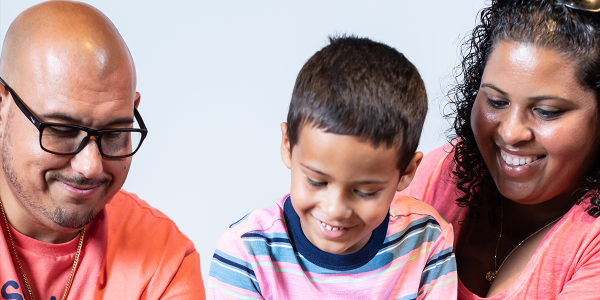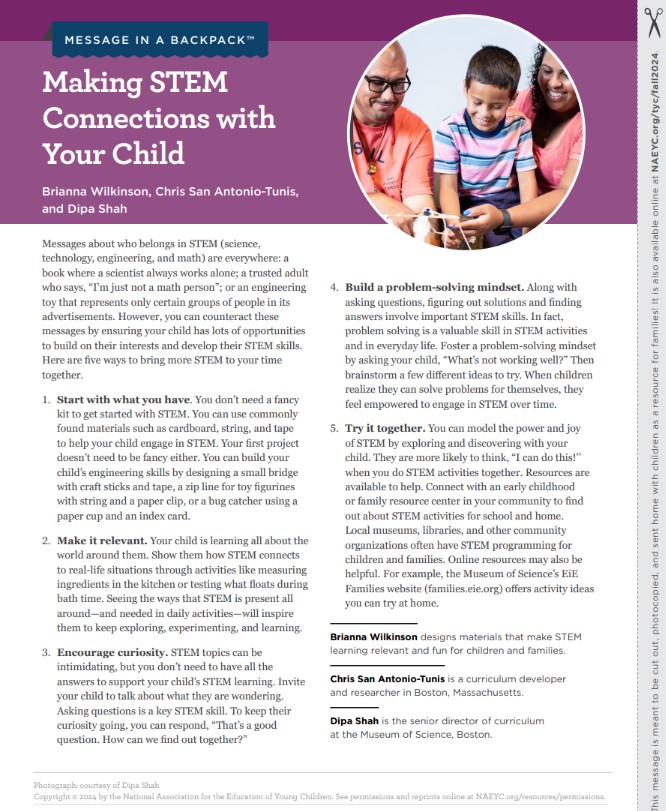Message in a Backpack™. Making STEM Connections with Your Child

You are here
Messages about who belongs in STEM (science, technology, engineering, and math) are everywhere: a book where a scientist always works alone; a trusted adult who says, “I’m just not a math person”; or an engineering toy that represents only certain groups of people in its advertisements. However, you can counteract these messages by ensuring your child has lots of opportunities to build on their interests and develop their STEM skills. Here are five ways to bring more STEM to your time together.
1. Start with what you have. You don’t need a fancy kit to get started with STEM. You can use commonly found materials such as cardboard, string, and tape to help your child engage in STEM. Your first project doesn’t need to be fancy either. You can build your child’s engineering skills by designing a small bridge with craft sticks and tape, a zip line for toy figurines with string and a paper clip, or a bug catcher using a paper cup and an index card.
2. Make it relevant. Your child is learning all about the world around them. Show them how STEM connects to real-life situations through activities like measuring ingredients in the kitchen or testing what floats during bath time. Seeing the ways that STEM is present all around—and needed in daily activities—will inspire them to keep exploring, experimenting, and learning.
3. Encourage curiosity. STEM topics can be intimidating, but you don’t need to have all the answers to support your child’s STEM learning. Invite your child to talk about what they are wondering. Asking questions is a key STEM skill. To keep their curiosity going, you can respond, “That’s a good question. How can we find out together?”
4. Build a problem-solving mindset. Along with asking questions, figuring out solutions and finding answers involve important STEM skills. In fact, problem solving is a valuable skill in STEM activities and in everyday life. Foster a problem-solving mindset by asking your child, “What’s not working well?” Then brainstorm a few different ideas to try. When children realize they can solve problems for themselves, they feel empowered to engage in STEM over time.
5. Try it together. You can model the power and joy of STEM by exploring and discovering with your child. They are more likely to think, “I can do this!’’ when you do STEM activities together. Resources are available to help. Connect with an early childhood or family resource center in your community to find out about STEM activities for school and home. Local museums, libraries, and other community organizations often have STEM programming for children and families. Online resources may also be helpful. For example, the Museum of Science’s EiE Families website (families.eie.org) offers activity ideas you can try at home.
Download this month's Message in a Backpack™ here!
Photograph: courtesy of Dipa Shah. Copyright © 2024 by the National Association for the Education of Young Children. See permissions and reprints online at NAEYC.org/resources/permissions.
Brianna Wilkinson designs materials that make STEM learning relevant and fun for children and families.
Chris San Antonio-Tunis is a curriculum developer and researcher in Boston, Massachusetts.
Dipa Shah is the senior director of curriculum at the Museum of Science, Boston.
